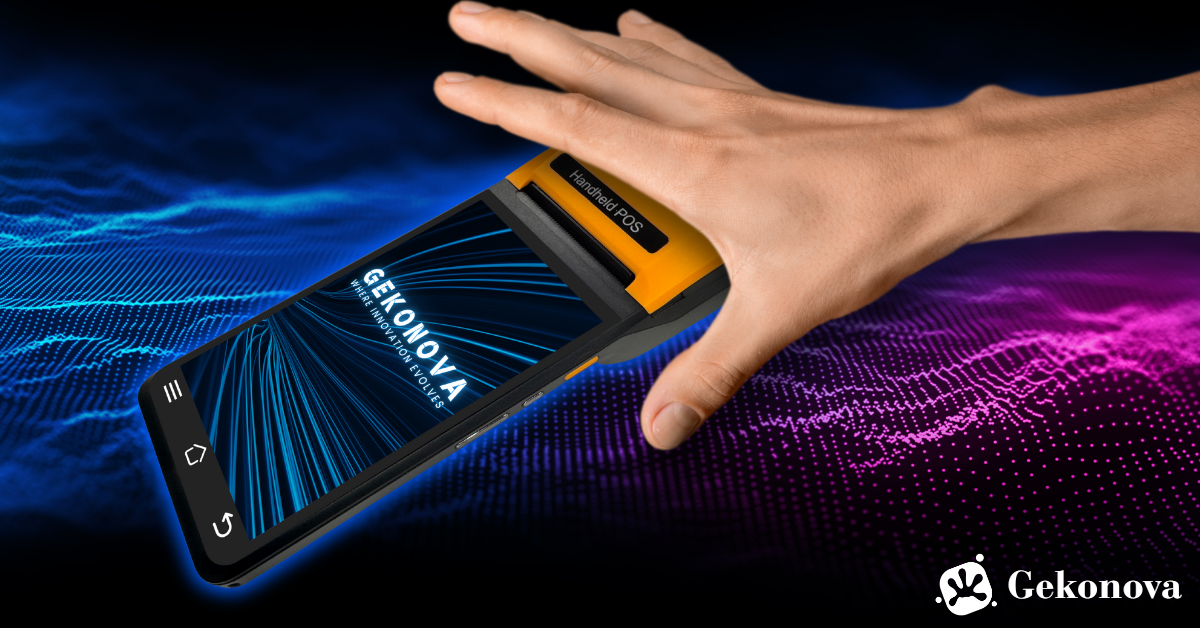Categories
As a software developer and biometric device retailer at Gekonova, I’ve witnessed the transformative power of palm vein payments in 2025, enabling effortless transactions with a simple hand wave. This technology’s blend of robust security, touch-free hygiene, and user convenience positions it as a cornerstone of modern payment systems.
I’m excited to share its evolution, advantages, implementation strategies, and future potential, drawing from my experience supporting diverse clients.

Tracing the development of palm vein payment systems reveals why they’re a leading solution today. Here’s a concise timeline of their rise:
1970s
Innovator Joe Rice developed vein pattern recognition to create a secure, hard-to-spoof biometric method after a personal security breach.
1990s
Fujitsu introduced its PalmSecure technology, initially for access control in finance and healthcare, setting the stage for payment use.
2000s
Japan pioneered palm vein technology in banking ATMs, demonstrating their reliability for secure transactions.
2010s–Early 2020s
By the early 2020s, notably 2020–2024, Amazon One and Weixin introduced palm vein scanning for payments in retail and public transit. Amazon One surpassed 4 million users in the U.S. by 2024, marking significant consumer adoption.
2025
Palm vein payments are gaining traction worldwide, with pilots in Singapore and the UAE, and major banks like JPMorgan deploying terminals.
Palm vein scanners use near-infrared light to map the unique vein patterns in your palm, generating an encrypted template tied to your payment account. A quick wave over a scanner completes the transaction—no cards or devices required. Based on my work at Gekonova, here’s why palm vein scanning for payments excel in retail and beyond:
Unrivaled Security: With a false acceptance rate below 0.00008%, vein patterns are nearly impossible to replicate, offering superior protection.
Hygienic Transactions: The contactless design minimizes germ spread, a critical feature for clients in retail and medical settings.
Privacy-First Approach: Internal vein patterns require active user consent, providing stronger privacy than passive methods like facial scans.
Rapid Processing: Transactions take seconds, streamlining checkouts in busy environments, as I’ve observed in high-volume stores.

Clients frequently inquire how palm vein payments compare to traditional card payments. From my perspective as a retailer, here’s a clear comparison:
Palm Vein: Vein patterns and liveness detection prevent spoofing, with an exceptionally low false acceptance rate of 0.00008%.
Cards: Susceptible to theft, skimming, or hacking, with card details and PINs vulnerable to compromise.
Palm Vein: Vein data is internal and consent-driven, safeguarding user privacy from unauthorized capture.
Cards: Expose personal information during transactions or breaches, heightening privacy risks, especially online.
Palm Vein: A hand wave completes payment, eliminating the need for cards, though users may need brief guidance on alignment.
Cards: Require carrying, swiping, or tapping a card, plus occasional PIN entry, which can be inconvenient if lost or faulty.
Palm Vein: Performs reliably indoors but may be affected by extreme cold; produces no physical waste.
Cards: Generate plastic waste and can degrade in harsh conditions, like heat or water exposure.
Palm vein scanning in finance is poised for explosive growth, with innovative trends driving their adoption. In China, Weixin’s palm payment system is active in retail and transit, enhancing user convenience. Globally, Singapore and the UAE are trialing palm vein payments in airports and banks, while Visa collaborates on biometric payment solutions. In the U.S., Amazon One now serves over 4 million users, and JPMorgan’s Paypad terminals are set to launch in 2025.
The market is projected to grow at a 26.1% CAGR through 2034. I foresee AI improving scan precision and cost reductions making palm vein systems accessible to smaller businesses. For Gekonova’s clients, this promises a future of widespread, dependable payment solutions.
I ensure clients understand potential obstacles with palm vein payments and how to address them:
Specialized hardware increases setup expenses compared to card systems.
Solution: Begin with a pilot program and scale as savings materialize, leveraging future cost declines.
Cold temperatures may impact blood flow, affecting scans in some climates.
Solution: Deploy in controlled indoor settings or use climate adjustments, effective in colder regions.
Incorrect hand positioning can cause initial scan errors for new users.
Solution: Provide clear signage and a short demo to ensure quick mastery.
Linking with existing payment infrastructure can be complex.
Solution: Work with vendors offering robust integration support and conduct pilot tests for compatibility.
At Gekonova, I’m passionate about delivering palm vein payments as a transformative solution that blends security, hygiene, and ease. Their unparalleled safety and privacy-first design make them ideal for retail, finance, and more. By grasping their history, benefits, and adoption strategies, businesses can confidently integrate this technology to boost efficiency and trust.
Let’s embrace a future where payments are as effortless as a hand wave—palm vein payments are paving the way!